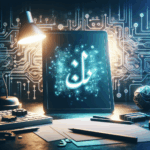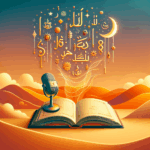The Arabic Alphabet and Its Contribution to Multiculturalism 🌍
The Arabic alphabet is more than just a system of writing—it’s a gateway to a rich tapestry of cultures, languages, and histories. In today’s globalized world, understanding the Arabic alphabet’s role in fostering multiculturalism is more relevant than ever. Join me as we explore the intricacies of this fascinating script and its impact on cultural diversity.
Table of Contents
1. Introduction to the Arabic Alphabet
2. Historical Significance of the Arabic Script
3. The Alphabet’s Role in Cultural Exchange
4. Modern-Day Influence of the Arabic Alphabet
5. Conclusion: Embracing Diversity Through Language
6. FAQs
Introduction to the Arabic Alphabet
The Arabic alphabet, consisting of 28 letters, is the writing system used for the Arabic language. Unlike the Latin alphabet, it is written from right to left, adding a unique charm to its script. But what truly sets it apart is its widespread use across various languages and its ability to unite diverse cultures under a single linguistic framework.
Historical Significance of the Arabic Script 📜
The Arabic script has been a crucial medium for knowledge transfer throughout history. During the Islamic Golden Age, scholars used Arabic to document advancements in science, mathematics, and philosophy. This era of enlightenment saw the translation of Greek and Roman texts into Arabic, preserving and enhancing their knowledge.
Moreover, the Arabic script spread alongside Islam, becoming the writing system for numerous languages, including Persian, Urdu, and Malay. This expansion facilitated intercultural communication and exchange, helping to bridge gaps between different civilizations.
The Alphabet’s Role in Cultural Exchange 🤝
The Arabic alphabet acts as a cultural ambassador, fostering understanding and appreciation among different ethnic groups. Its calligraphy, often seen as an art form, transcends language barriers, resonating with people from various backgrounds. The beauty of Arabic calligraphy has inspired countless artists worldwide, contributing to a global appreciation of this script.
Furthermore, the script’s adaptability has allowed it to integrate seamlessly with indigenous languages, enriching local cultures while preserving their unique identities. This blending of traditions underscores the Arabic alphabet’s role in promoting multiculturalism.
Modern-Day Influence of the Arabic Alphabet 🌐
Today, the Arabic alphabet continues to influence global culture and communication. The rise of social media and digital platforms has amplified its reach, connecting people across continents. Arabic is one of the official languages of the United Nations, emphasizing its importance in international diplomacy and global discourse.
Additionally, the growing interest in learning Arabic as a second language highlights the script’s increasing relevance. As more people embrace the language, they gain insights into the diverse cultures and histories of the Arabic-speaking world, fostering mutual respect and understanding.
Conclusion: Embracing Diversity Through Language
The Arabic alphabet is more than just letters—it’s a symbol of cultural diversity and unity. By understanding and appreciating its contributions to multiculturalism, we can celebrate the richness of human expression and foster a world that values diversity.
FAQs
1. Why is the Arabic alphabet written from right to left?
The right-to-left writing direction of the Arabic alphabet is rooted in ancient Semitic scripts, from which Arabic evolved. This direction is traditional and has been preserved through centuries.
2. How has the Arabic alphabet influenced other languages?
The Arabic alphabet has been adapted for several languages, such as Persian, Urdu, and Kurdish. Its influence extends to vocabulary, where many Arabic words have been borrowed into other languages, enriching their lexicons.
3. What is the significance of Arabic calligraphy?
Arabic calligraphy is highly regarded as a form of artistic expression. It transcends linguistic boundaries and is celebrated for its aesthetic appeal, often used in decorative arts and architecture worldwide.
4. Can learning the Arabic alphabet help in understanding other cultures?
Absolutely! Learning the Arabic alphabet opens doors to exploring Arabic literature, history, and culture, providing deeper insights into the traditions and values of Arabic-speaking communities.






